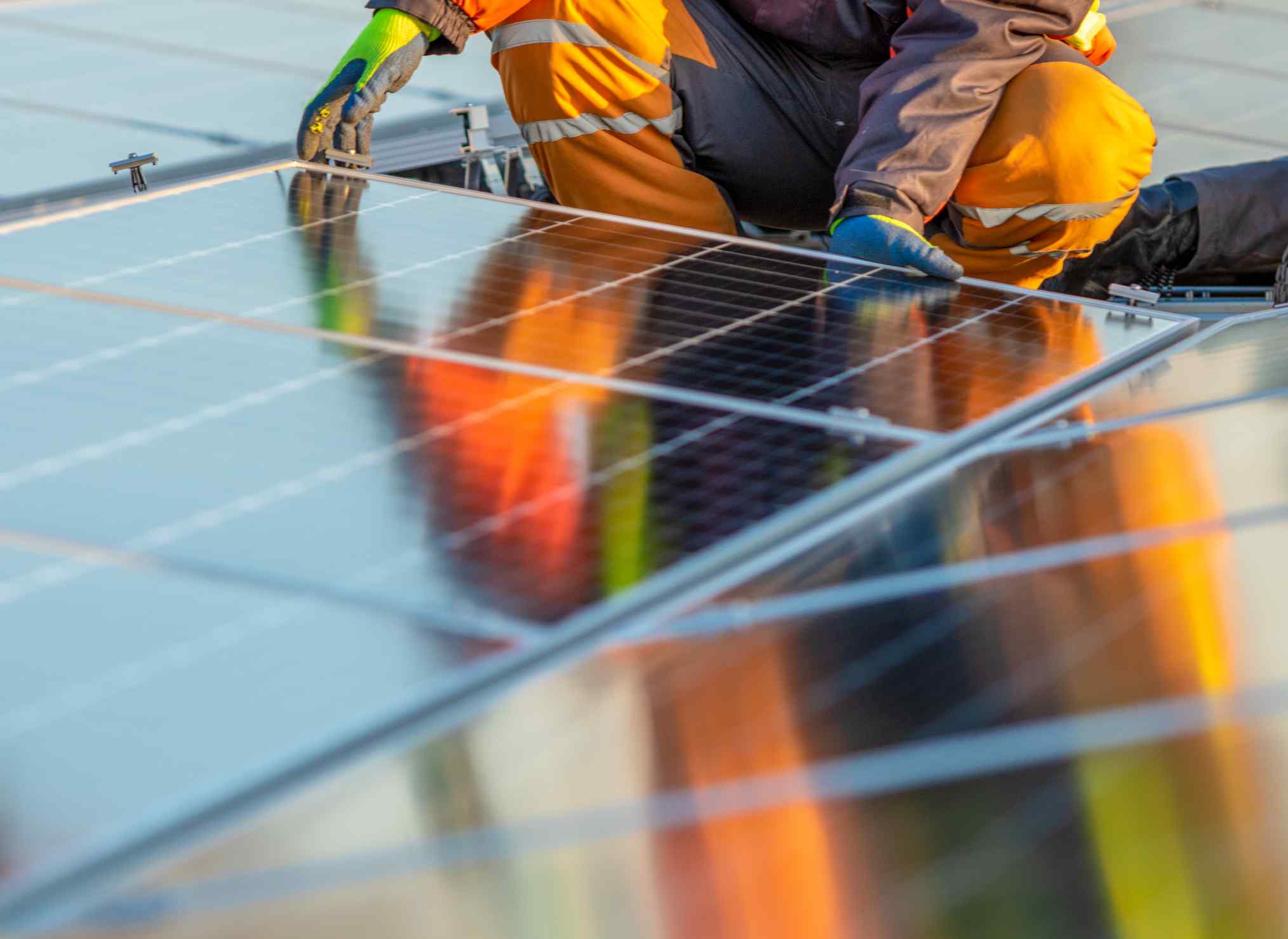POSTED
August 30, 2024
Why Utility-Grade Solar Investment Funds Outperform Index Funds
Climate change is a serious issue that requires immediate action. It increases the risks of extreme weather events and negatively impacts people’s health and livelihoods. Worryingly, climate change is projected to cause around 250,000 additional deaths per year from malnutrition, malaria, and heat stress. Clearly, something needs to be done.

Fortunately, there is a way for you to help combat the negative effects of climate change. Investing in utility-scale solar projects is a unique opportunity for investors who want to have a positive impact on the environment. These projects can also potentially offer attractive financial returns. In fact, utility-scale solar investments can outperform traditional index funds.
This article will compare investments in utility-scale solar investment funds with index funds, highlighting the key advantages of solar investments. We’ll also give a detailed look at how Shasta Power facilitated these investments and why they are an attractive option for accredited investors.
Index Funds
Index funds are popular investment options for many people. They provide broad market exposure, spreading out your risk by reducing the impact of any single stock’s poor performance. Over the long term, the average annual return for the S&P 500 has been around 10%. This is typically lower than the return on solar investment funds. It does, however, come with a lower risk and greater liquidity.
Financial Performance of Utility-Grade Solar Investment Funds

There are a few trends that make solar funds attractive for investors. First, the price of solar energy is decreasing. The levelized cost of energy (LCOE), a measurement that calculates the present value of the total cost of building and operating a power plant over an assumed lifetime, is falling. In 2022, the LCOE for solar power was $39 per megawatt hour (MWh). When factoring in federal investment tax credits, this number was as low as $29 per MWh. What’s more, the average market value of solar power increased by 40% to $71 per MWh in the same year. This reduction in costs and increase in price has helped improve the profitability and attractiveness of solar investments.
The other trend is the growing demand for solar energy. Global renewable energy capacity increased by 50% in 2023, adding 507 gigawatts (GW) to energy systems worldwide. This number is projected to increase to 710 GW by 2028. Over the next five years, the International Energy Agency (IEA) expects that renewable power capacity additions will continue to increase, with solar and wind power accounting for 96% of new capacity.
Decreasing costs paired with increasing demand means utility-scale solar farms are more profitable than ever. This is helped by mechanisms like Power Purchase Agreements (PPAs). PPAs allow power producers to sell electricity at a predetermined price for a specified period, typically 10 to 25 years.
There is also favorable legislation that makes utility-scale solar installations even more profitable. For instance, the Inflation Reduction Act (IRA) extends the Solar Investment Tax Credit for projects that start construction by the end of 2032. The Production Tax Credit (PTC) under the IRA also provides a base rate of $0.0275 per kilowatt hour (kWh) for electricity produced from qualified solar facilities. These credits make building and supplying solar energy cheaper, increasing the profitability of utility-scale solar installations and, by extension, more beneficial for investors.
On average, the internal rate of return (IRR) of a utility-scale solar farm is 5-8% depending on the specific project and market conditions. This can equal $5-$8 million in revenue on a $100 million project. Our Summit Power Fund typically targets an IRR of greater than 20% over the life of the fund.
You may be wondering how The Summit Power Fund can deliver a 20% IRR if a solar farm ultimately earns only 5-8%. The simple reason is we sell the farm before it is operating. By taking on early development risk, then selling before construction, the Summit Power Fund is able to leverage a higher rate of return. We also make it easy to invest. Simply create an account, verify your eligibility to invest, sign the subscription agreement, and then wire your investment.
While solar funds can offer high returns, they are focused on specific renewable energy projects. This makes them more risky and dependent on regulatory and market developments.
The Environmental Return of Utility-Grade Solar Investment Funds
Investing in utility-scale solar projects produces more than monetary gains. It also offers environmental benefits that traditional index funds can’t offer. More concerning, since index funds are climate blind, you might inadvertently be directly investing in oil and gas. Investing in solar funds helps replace fossil-fuel energy generation, reducing societies’ carbon footprint. Solar farms can save approximately 385,000 to 436,000 pounds of CO2 emissions per year per acre.
These installations also promote sustainable land usage. For example, pollinator-friendly solar farms integrate native plants and wildflowers around the solar panels. This creates ideal habitats for bees and other pollinators and boosts agricultural production in the surrounding area. Agrivoltaics is another environmentally friendly practice that is gaining popularity. It combines solar energy production with agriculture, allowing for the simultaneous use of land for both purposes. This helps optimize land use and maintains agricultural productivity.
The Social Return of Utility-Grade Solar Investment Funds

Utility-scale solar isn’t only great for the environment. Oftentimes, the communities that host these installations see significant benefits. For instance, solar projects can lead to upgrades in the local infrastructure. Better roads and updated power grids can lead to more economic development and a more resilient power grid. They also create green jobs. During the building phase alone, a single large solar farm can create hundreds of jobs for months or even years.
Communities can see increased local spending by workers involved in the construction and maintenance of utility-scale solar farms. Local governments can also see a boost in tax revenue from higher property taxes, increased sales tax revenue, and increased income taxes.
Index funds can be a good investment choice. Historically, they provide stable returns and relatively low risk. Solar funds can potentially offer similar or better returns than index funds. Even better, solar funds let you invest in projects that help build a sustainable future. Where index funds are environmentally agnostic, solar funds directly contribute to a decreased carbon footprint and local economic development and support sustainable land use strategies.
We all have a responsibility to help combat global warming. As an investor, solar funds give you a unique opportunity to invest in projects that have an enormous positive impact on the environment. They can also potentially provide attractive financial returns.
At Shasta Power, we help investors make a positive environmental and social impact. Visit our investment information page to learn more about our solar projects and investment opportunities.





